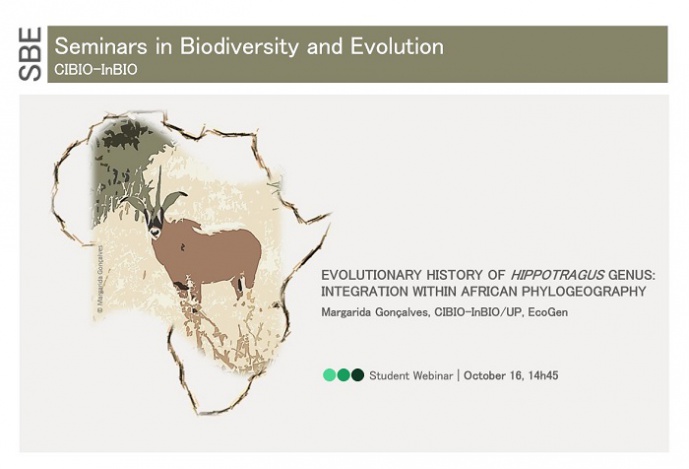Evolutionary history of Hippotragus genus: integration within African phylogeography

STUDENT WEBINAR IN BIODIVERSITY AND EVOLUTION
Hippotragus is an endemic African genus, including the emblematic roan (H. equinus) and sable (H. niger) antelopes. Both species occur in sub-Saharan Africa, across savannah habitats, and are found in sympatry throughout most of their distributional range. They share many life-history characteristics, living in socially structured breeding herds. Remaining wild populations are mainly found within protected areas, with decreasing numbers over the past decades due to a series of anthropogenic threats. Therefore, current management plans can benefit from genetic studies that assess diversity and structure at the intraspecific level. This work focuses both species, but my central model is the roan, for which I reconstructed the evolutionary history. By assembling the most comprehensive dataset for this species to date, we combine a large set of microsatellite data with whole-mitochondrial genomes to perform spatial analyses of genetic diversity and calculate overall patterns of differentiation and structure. We further validate and assess if the clusters observed correspond to the described subspecies. Using estimates on divergence time, we associate vicariant events to Plio-Pleistocene climatic oscillations and geomorphological features that shaped African biodiversity and drove the evolutionary trajectories of several antelope species. Furthermore, we perform a comparative population genomic analyses on both roan and sable, using whole-genome sequencing, covering both species’ native distributional range. We follow a genotype likelihood framework to provide insight into population structure and phylogenetic relationships, as well as genome-wide diversity and differentiation statistics. Observed patterns are mainly concordant with previous studies and can be associated with different evolutionary trajectories followed by both species. Ultimately, we assemble the first reference genome for roan, providing valuable resources for future research on this species, as well as on the evolution of adaptive traits among the Hippotraginae sub-family.
Margarida Gonçalves holds a MsC in Conservation Biology from the University of Lisbon. Currently she is a PhD student on her final year of BIODIV doctoral program, working under the supervision of Dr. Raquel Godinho (CIBIO-InBIO), as part of the EcoGen group, as well as Dr. Hans Siegismund (University of Copenhagen) and Dr. Bettine Jansen van Vuuren (University of Johannesburg). Her interests focus on phylogeography, population genetics/genomics and the application of these tools towards species management.
[Host: Raquel Godinho, ECOGEN]